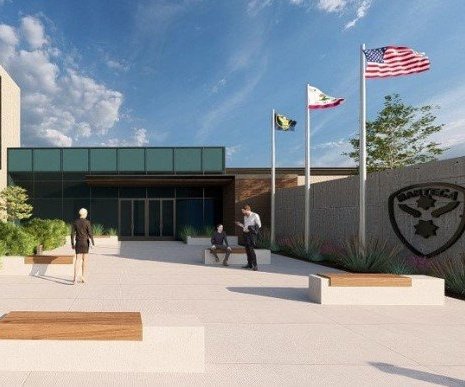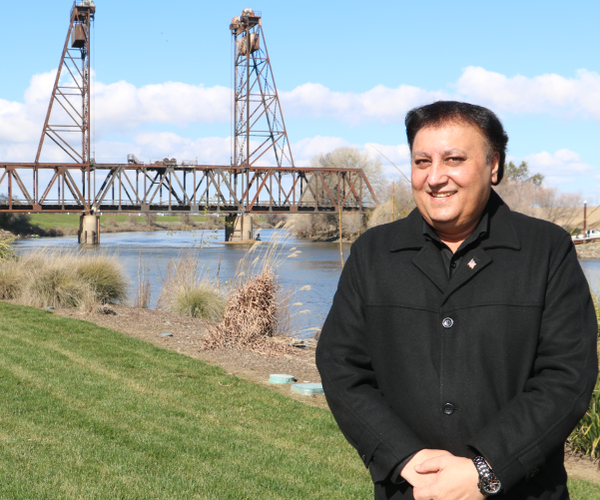The high in Manteca, Ripon, and Lathrop — if National Weather Service forecasts are correct — will reach or exceed 110 degrees during five of the next six days.
And the consecutive string of triple digit highs may not end until Friday, July 12.
The prolonged heat wave is expected to push California’s power grid to the limit.
At the same time, low humidity and high winds are combining for heightened wildfire risks forcing utilities such as PG&E to notify customers in vulnerable areas to be ready for their power to be cutoff when conditions in make specific areas vulnerable to a wildfire.
PG&E indicated it is “all hands on deck” given the high likelihood there will be heat-related power outages.
PG&E has pre-positioned crews and equipment, such as transformers, expected to be affected by heat-related outages and will mobilize equipment to other areas, as needed, based on real-time impacts.
During extended periods of high temperatures, energy use increases and electric grid equipment gets hotter.
Equipment such as transformers need time to cool down during a heat wave. This usually happens overnight when temperatures and energy usage drop.
Heat events with high overnight temperatures can put additional stress on equipment and cause heat-related outages.
After the temperature reached an expected 111 degrees today, the forecast calls for the overnight low to drop down only 73 degrees.
During the rest of the heat wave, the overnight lows are expected to drop to the mid-60s.
“We are closely monitoring areas where abnormally high heat is forecasted and demand on the grid will be elevated, such as the Santa Clara Valley and other interior Bay valleys,” said Scott Strenfel, Senior Director of Meteorology and Fire Science at PG&E. “This is in addition to the entire Central Valley where temperatures are projected to be the hottest.”
While Manteca,-Lathrop-Ripon will bake with an expected degree high today, San Francisco — where many homes and even stores and restaurants do not have air conditioning — is expected to reach 88 degrees.
Today’s high in San Jose is predicted to be 98 degrees while in Fremont the high may reach 99 degrees.
Yosemite Valley will be at 94 degrees and Sonora at 105 degrees.
PG&E has informed approximately 12,000 customers that we may need to proactively turn off their power for safety starting on Tuesday morning due to high winds and low humidity raising the potential for wildfires.
The customers potentially affected by the PSPS event are in targeted portions of the following 10 counties: Shasta, Tehama, Glenn, Colusa, Lake, Yolo, Napa, Sonoma, Butte and Solano
The coolest day in Manteca this week will be the Fourth of July on Thursday when the forecast is for a high of 108. The hottest will be Saturday when it is expected to reach 114 degrees.
Fire personnel through the South County are advising people to stay hydrate and limit strenuous outdoor activities.
During heat waves, local agencies typically see an increase in heat-related illnesses.
Here are the signs, what to do when they happen, and when it’s time to go to the emergency room or call 911.
Heat cramps
Heavy sweating during intense exercise. Muscle pain or spasms.
*What to do: Cease exercising. Move to a cool place. Drink water or a beverage with electrolytes.
*When to seek help: If cramps last longer than an hour, if you’re on a low-sodium diet, or if you have heart problems.
Heat exhaustion
Heavy sweating. Cold, pale and clammy skin. A fast, weak pulse. Nausea or vomiting. Muscle cramps. Tiredness or weakness. Dizziness. Headaches. Fainting.
*What to do: Move to a cool place. Loosen your clothes. Apply cold compresses or take a cold bath. Sip water.
*When to seek help: If you’re throwing up, your symptoms get worse, or your symptoms last longer than an hour.
Heat stroke
Body temperature of 103 or higher. Hot, red, dry or damp skin. A fast, strong pulse. Headache. Dizziness. Nausea. Confusion. Fainting.
*When to call 911: Immediately. Heat stroke is a medical emergency. Do not give a person suffering from heat stroke anything to drink. Move them to a cooler place and use cold compresses or a cold bath to lower their temperature.
To contact Dennis Wyatt, email dwyatt@mantecabulletin.com






